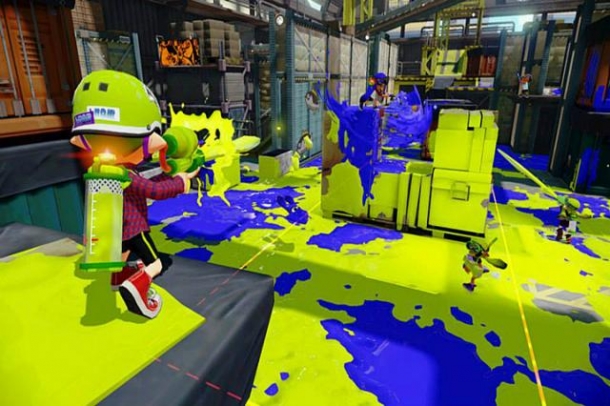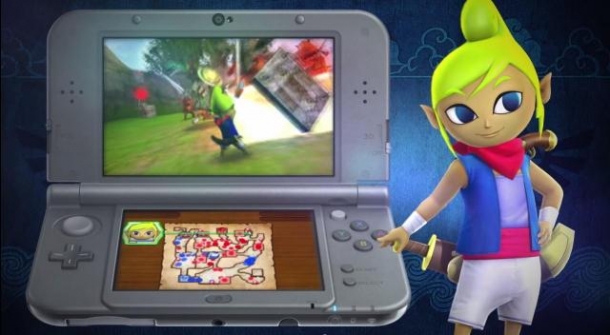Card Company (1889 - 1956)
Nintendo was founded as a card company in late 1889, originally named Nintendo Koppai. Based in Kyoto, Japan, the business produced and marketed a playing card game called Hanafuda. The handmade cards soon became popular, and Yamauchi hired assistants to mass produce cards to satisfy demand.
New Ventures (1956 - 1974)
In 1956, Hiroshi Yamauchi (grandson of Fusajiro Yamauchi) visited the U.S. to talk with the United States Playing Card Company, the dominant playing card manufacturer there. He found that the world's biggest company in his business was only using a small office. This was a turning point when Yamauchi realized the limitations of the playing card business. He then gained access to Disney's characters and put them on the playing cards to drive sales.
In 1963, Yamauchi renamed Nintendo Playing Card Co. Ltd. to Nintendo Co., Ltd. The company then began to experiment in other areas of business using newly injected capital. During this period of time between 1963 and 1968, Nintendo set up a taxi company, a love hotel chain, a TV network, a food company (selling instant rice, similar to instant noodles) and several other things. All of these ventures eventually failed, and after the 1964 Tokyo Olympics, playing card sales dropped, and Nintendo's stock price plummeted to ¥60.
In 1966, Nintendo moved into the Japanese toy industry with the Ultra Hand, an extendable arm developed by its maintenance engineer Gunpei Yokoi in his free time. Despite some successful products, Nintendo struggled to meet the fast development and manufacturing turnaround required in the toy market, and fell behind the well-established companies such as Bandai and Tomy.
In 1973, its focus shifted to family entertainment venues with the Laser Clay Shooting System, using the same light gun technology used in Nintendo's Kousenjuu series of toys, and set up in abandoned bowling alleys. Following some success, Nintendo developed several more light gun machines (such as the light gun shooter game Wild Gunman) for the emerging arcade scene. While the Laser Clay Shooting System ranges had to be shut down following excessive costs, Nintendo had found a new market.
Video Games (1974 - Present)
Nintendo's first venture into the video-gaming industry was securing rights to distribute the Magnavox Odyssey video game console in Japan in 1974. Nintendo began to produce its own hardware in 1977, with the Color TV Game home video game consoles. Four versions of these consoles were produced, each including variations of a single game (for example, Color TV Game 6 featured six versions of Light Tennis).
A student product developer named Shigeru Miyamoto was hired by Nintendo at this time.[15] He worked for Yokoi, and one of his first tasks was to design the casing for several of the Color TV Game consoles. Miyamoto went on to create, direct and produce some of Nintendo's most famous video games and become one of the most recognizable figures in the video game industry.
In 1975, Nintendo moved into the video arcade game industry with EVR Race, designed by their first game designer, Genyo Takeda, and several more titles followed. Nintendo had some small success with this venture, but the release of Donkey Kong in 1981, designed by Miyamoto, changed Nintendo's fortunes dramatically. The success of the game and many licensing opportunities (such as ports on the Atari 2600, Intellivision and ColecoVision) gave Nintendo a huge boost in profit.
In 1980, Nintendo launched Game & Watch—a handheld video game series developed by Yokoi where each game was played on a separate device—to worldwide success. In 1983, Nintendo launched the Family Computer (commonly shortened "Famicom"), known outside Japan as the Nintendo Entertainment System (NES), home video game console in Japan, alongside ports of its most popular arcade titles. In 1985, the NES launched in North America, and was accompanied by Super Mario Bros., one of the best-selling video games of all time.
After the success of the Game & Watch, Yokoi developed the Game Boy handheld game console in 1989. The Game Boy, the best-selling handheld of all time, remained dominant for more than a decade. Incremental updates in the Game Boy Pocket and Game Boy Color over the next decade did little to change the original formula.
The Nintendo Entertainment System was superseded by the Super Famicom, known outside Japan as the Super Nintendo Entertainment System (SNES). This was Nintendo's console of the 16-bit 4th generation, following the Famicom of the 8-bit 3rd generation, whose main rival was the Sega Mega Drive/Genesis. A console war between Sega and Nintendo ensued. Although relatively late to market, the SNES considerably outsold the Mega Drive/Genesis.
Aiming to produce an affordable virtual reality console, Gunpei Yokoi designed the Virtual Boy, a table-mounted semi-portable console featuring stereoscopic graphics. Users view games through a binocular eyepiece and control games using a gamepad. Critics were generally disappointed with the quality of the games and graphics, and complained of gameplay-induced headaches. The system sold poorly and was quietly discontinued. Amid the system's failure, Yokoi was asked to leave Nintendo.
Its market share slipping to Sega and new rival Sony, Nintendo utilized a $185 million marketing campaign, centered around the "Play It Now" slogan, to revitalize its brand. The company's next home console, the Nintendo 64, was released in 1996 and features 3D graphics capabilities and built-in multiplayer for up to four players. The system's controller introduced the analog stick. Nintendo later introduced the Rumble Pak, an accessory for the Nintendo 64 controller that produced force feedback with compatible games. It was the first such device to come to market for home console gaming and eventually became an industry standard.
The Nintendo GameCube followed in 2001 and was the first Nintendo console to utilize optical disc storage instead of cartridges. The console was profitable, but sales paled in comparison with the rival PlayStation 2.
A major update to its handheld line, Game Boy Advance, featuring improved technical specifications similar to those of the SNES. A first update improved lighting, while a later iteration brought a smaller form factor. Although originally advertised as an alternative to the Game Boy Advance, the Nintendo DS replaced the Game Boy line sometime after its initial release in 2004. It was distinctive for its dual screens and a microphone, as well as a touch-sensitive lower screen. The Nintendo DS Lite brought a smaller form factor. The Nintendo DSi featured larger screens and two cameras, and was followed by a larger version.
The successor to the Nintendo DS line, the Nintendo 3DS, uses the process of autostereoscopy to produce a stereoscopic three-dimensional effect without glasses. The console got off to a slow start, initially missing many key features that were promised before the system launched. Partially as a result of slow sales, Nintendo stock declined in value. Subsequent price cuts and game releases renewed investor confidence in the company.
Nintendo's most recent home console, the Wii, uses motion sensing controllers and has on-board online functionality used for services such as Nintendo Wi-Fi Connection and Internet Channel (in contrast to GameCube's limited functionality on select games with an additional modem accessory). Nintendo upcoming home console, the Wii U, will feature a touch screen controller.


